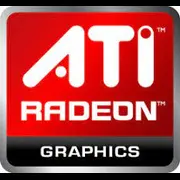ATI FirePro V8800

ATI FirePro V8800 in 2025: Nostalgia or a Relevant Tool?
Introduction
The ATI FirePro V8800 graphics card, released in 2010, became a legend among professional GPUs of its time. Despite its venerable age, it still generates interest among enthusiasts and professionals working with legacy systems. In this article, we will explore whether its use is justified in 2025 and who may find it useful.
1. Architecture and Key Features
TeraScale 2 Architecture
The FirePro V8800 is built on TeraScale 2 architecture (codename "Cypress"), manufactured using a 40nm process. It boasts 1600 stream processors and 32 texture units. The card supports DirectX 11 and OpenGL 4.1, which seem outdated compared to modern standards (DirectX 12 Ultimate, Vulkan 2.0).
Lack of Modern Technologies
It does not support ray tracing (RTX), AI algorithms (DLSS, FSR), or FidelityFX. Its advantage lies in stability for professional applications optimized for older drivers.
2. Memory: Modest, But Sufficient for Its Tasks
GDDR5 and 256-bit Bus
The memory capacity is 2GB GDDR5 with a bandwidth of 147GB/s (256-bit bus). This is insufficient for modern gaming and 3D rendering: even a simple scene in Blender consumes 4–6GB. However, for working with 2D graphics or older software (e.g., AutoCAD 2010), the resources are adequate.
Limitations
The wide bus compensates for the low memory frequency (1150 MHz), but in multitasking scenarios, the buffer quickly overflows.
3. Gaming Performance: Not for Gamers
Outdated Metrics
In games from the 2020s, the FirePro V8800 shows less than 15 FPS even on low settings (1080p). For example:
- Cyberpunk 2077: 8–10 FPS;
- Elden Ring: 10–12 FPS.
Compatibility
The card can run projects up to 2015 at medium settings: The Witcher 3 — 25–30 FPS (720p), GTA V — 35–40 FPS (1080p). 4K support is absent.
4. Professional Tasks: Narrow Specialization
3D Modeling and Rendering
In Autodesk Maya or SolidWorks, the V8800 can handle simple tasks, but rendering complex scenes will take hours. In comparison, a modern Radeon Pro W6800 performs similar calculations 10–15 times faster.
Calculations on OpenCL
Support for OpenCL 1.2 allows using the card for scientific calculations (e.g., physical modeling), but its FP32 performance (2.1 TFLOPs) is lower than even integrated graphics from Ryzen 8000 (3.5 TFLOPs).
Video Editing
Editing in DaVinci Resolve is possible only at resolutions up to 1080p and with minimal effects. Exporting a 10-minute video will take 30–40 minutes.
5. Power Consumption and Heat Output
TDP 225W
The card's power consumption is comparable to modern gaming models (e.g., RTX 4060, TDP 115W), but its efficiency is extremely low. A power supply of at least 500W with an 8-pin connector is required.
Cooling
The turbine cooling system is noisy (up to 45 dB under load). A case with good ventilation is recommended (at least 3 fans).
6. Comparison with Competitors
2010s Alternatives
- NVIDIA Quadro 5000 (2010): 2.5GB GDDR5, 352 CUDA cores. Lags in OpenCL tasks.
- AMD FirePro W9100 (2014): 16GB GDDR5, 2816 cores. More promising for professional use.
Modern Solutions
- NVIDIA RTX A2000 (2021): 12GB GDDR6, supports RTX. Price: $600–700.
- AMD Radeon Pro W6600 (2021): 8GB GDDR6, 1792 cores. Price: $649.
7. Practical Tips
Power Supply and Compatibility
- Minimum PSU: 500W (80+ Bronze).
- Compatible only with motherboards supporting PCIe 2.0 x16.
Drivers
The latest drivers were released in 2019. For Windows 10/11, use compatibility mode.
8. Pros and Cons
Pros:
- Reliability and durability.
- Support for legacy software.
- Low price on the secondary market ($50–80).
Cons:
- No support for modern APIs.
- High power consumption.
- Limited memory capacity.
9. Conclusion: Who is the FirePro V8800 For?
This graphics card is suitable for:
1. Retro PC enthusiasts collecting systems from 2010-2015.
2. Professionals working with outdated professional software (e.g., in educational institutions).
3. IT archivists recovering projects on old hardware.
In 2025, the FirePro V8800 is a museum exhibit rather than a working tool. For serious tasks, it's better to opt for modern counterparts, such as the Radeon Pro W7800 or NVIDIA RTX A4000, which offer 20–30 times greater performance with half the power consumption.
Basic
Memory Specifications
Theoretical Performance
Miscellaneous
Benchmarks
Compared to Other GPU
Share in social media
Or Link To Us
<a href="https://cputronic.com/en/gpu/ati-firepro-v8800" target="_blank">ATI FirePro V8800</a>